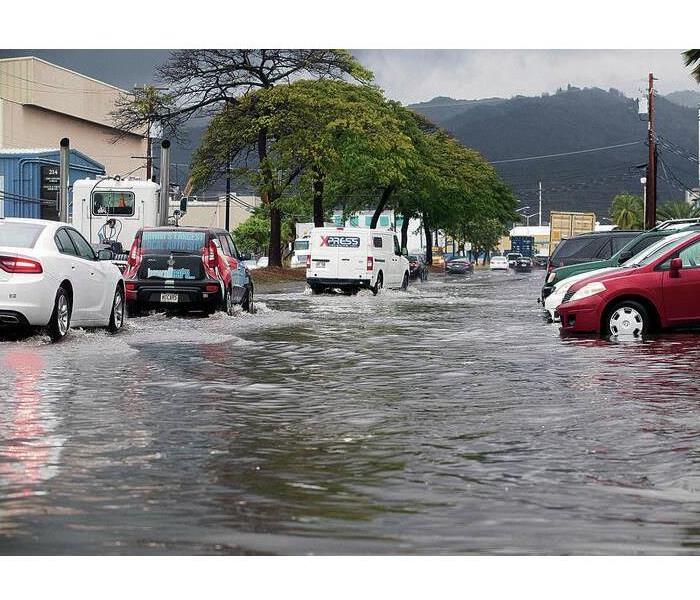Commercial Flood Plan for your Business
7/29/2022 (Permalink)
In a commercial business of any size, floods are in the top two most common disasters experienced across the U.S. Even with a detailed emergency plan, most businesses remain unprepared. Statistics show, the number of businesses that close permanently in response to a disaster, is a staggering one to one. Flood plans, like your fire evacuation preparedness plan, are key not only to mitigating the very real property and health risks of common flood-related disaster, but key to your future success.
The Most Basic Flood Evacuation Plan Should Include:
- The capacity for quick response.
With personnel that have specific task and responsibilities in times of emergency. - A disaster supply kit.
Including emergency and medical supplies, as well as enough food and water to last at least 72 hours. Preparedness training at work should likewise instruct employees on preparing their own mobile kit, for preparation to shelter-in-place for 24 hours in the event of emergency. - Plan development and training.
All employees should know what to do in an emergency, including disaster-specific evacuation and emergency response procedures. Assign specific employees (and backup personnel) to key tasks, such as emergency shut-down of equipment and power sources and performing a roll-call. Exercises and drills to cement skills and uncover potential issues should be regularly performed, and flood and other emergency action plans reviewed and updated regularly. Clearly post and provide employees with paper copies of plans. - Emergency contact information.
Ensure all employees have a list of key telephone numbers. Blank business cards sheets from the local office supply are a convenient, easy way to provide a wallet-size list. These lists should be distributed quarterly. - Additional guidance.
This is not an all-inclusive list, SERVPRO of Central Honolulu can prepare an inspection of your commercial property and can put a digital Emergency Readiness Plan together free of charge.
mold and bacteria proliferation increase with each hour left unaddressed. Quick remediation, proper safety gear and on-site sanitary and medical provisions are essential to treating clean-up related injury.






 24/7 Emergency Service
24/7 Emergency Service
